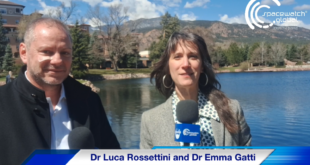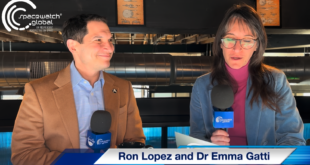By Torsten Kriening

We are just halfway through 2023 and I have accumulated enough miles in the Space conference business that I feel I can sit down and put down some ideas, or notes at least, on what we at SpaceWatch.Global have seen and learned through the lens of the media in the past weeks and months. We have visited six countries, met thousands of people, and seen some new trends. But are these trends destined to ever be solved? Or are they just buzzwords echoed over and over again?
January in Brussels

2023 started with the EU Space Conference in Brussels. The European Commission, EU agencies, ESA, national space agencies, and industrial representatives – mainly lobbyists – meet to discuss, or better to say, to listen to two days of ready-made statements. Time for discussion happened mainly in bilateral, pre-set-up meetings.
When on 25 January 2022 Thierry Breton (European Commissioner for Internal Market) announced IRIS2 and signed the 1 billion Euro Cassini Font to foster the European industry the news was well received. IRIS2 is a 6 billion euro (2.4 provided by the EU), multi-orbit, sovereign, Europe-made constellation focused on government and defense applications. It got the interest of the market – from established players to SMEs and new players. Now, one year and a half years after its initial announcement, the competition between potential consortiums to build such a constellation is on. The competitors are both small and big players in the private sector, but also nations (mainly France vs. Germany).
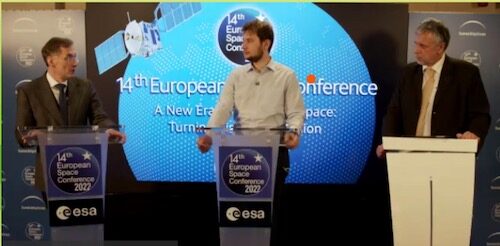
The opening statement in 2023 by Breton provided important information – that a European Space Law is on its way. The speed is quite impressive, considering that last year SpaceWatch.Global moderated a press briefing with MEP Niklas Nienass and Prof Kai-Uwe Schrogl exactly on this issue.
But a European Space Law is hard to achieve. The current reality is that some countries already have a national Space Law – i.e. Finland, Luxembourg, and France just to mention a few. Furthermore, a space law without a space strategy does not go far. When we questioned one of our EU insiders, they replied that “Next year we will have the EU elections and the European parliament might change. The stakeholders might have different priorities from the present one, alas it is difficult to bet on having both a Space Law and a Space Strategy by 2024”.
TREND: Europe wants a European Space Law
PROBLEM: Political games will not make a European Space Law happen any time soon
April in Colorado
As the year went by we were lucky enough to be able to participate in our first Space Symposium in Colorado Springs blessed by stunning weather. The first impression for anyone visiting the Symposium is that it is massive. It is a breathtaking (literally, as it is a mile high) location at the edge of the mighty Rocky Mountains – with the stunning 3480 m Twin Peaks in plain sight. Something you don’t see every day in Berlin.
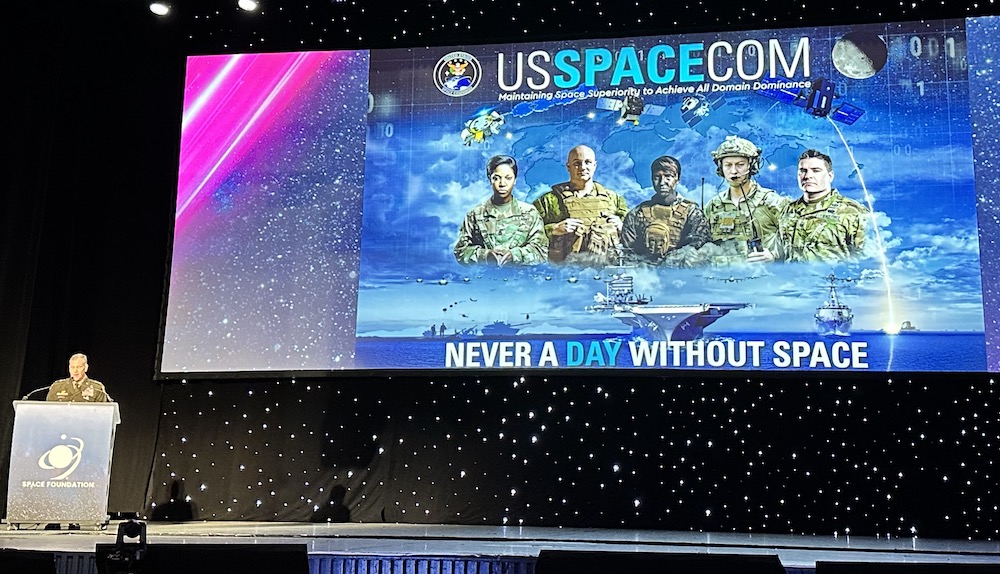
Twelve thousand visitors from around the globe came to the event. The Symposium hosted more international military uniforms than you can imagine. Keynotes were given by speakers like the Commander of the U.S. Space Command, U.S. Army General James H. Dickinson, and the Chief of Space Operations of the US Space Force, Gen. B. Chance Saltzman, NASA administration and top-level politicians and global space leaders. The Symposium demonstrated the healthy, and wealthy, status of the space market. The health was demonstrated by the presence of hundreds of industries and the wealth by the dimension of some booths in the North Hall.
One intervention that was particularly important for the sector was the newly announced framework on NASA Details Strategy Behind Blueprint for Moon to Mars Exploration, by NASA Deputy Administrator, Col. (USAF, ret) Pam Melroy. It is important because the Artemis Accords, which this framework comes after, is a political document, a declaration of intent. This framework instead is a technical implementation strategy with standards and norms, and it aims at developing standards for human exploration on the Moon and other planets. It’s a step forward towards US-led human exploration of our solar system.
The framework – and the recently announced work on space diplomacy by the White House, demonstrate again and again that space is a must-have for any nation that wants to seriously think about its future commercial, political, and military capabilities in a comprehensive way.
However, it is clear that in this scenario there is only one leader. Europe argues for a leading position in various sectors (such as earth observations, climate change applications, space science, etc.), but I am not sure whether this is a feasible goal or just wishful thinking. If we take a look at the numbers, the government budget in the US for Space (this includes NASA and other government agencies, but does not include private investors) in 2022 was just a bit above 60 billion USD, while in Europe (Europe national budgets, ESA, the European Union, Eumetsat and ESO) was around 14.6 billion USD (Data updated to 2022 from Euroconsult). To be fair, space in Europe is growing, and at a rate even bigger than the US, however, we are twenty years late, and Europe’s budget is undeniably smaller.
TREND: The US invited like-minded countries to join their space exploration and space diplomacy efforts.
PROBLEM: The UN is on the side-lines of this framework, just as supervising body.
May in Oslo
At the end of May, we were invited to the first International Astronautical Federation (IAF) Global Space Conference on Climate Change (GLOC), hosted in Oslo and co-organized by the IAF and the Norwegian Space Agency (NOSA). The theme was “Fire and Ice”. The emotional start of the event with the Norwegian Sami artist ISÁK set the tone of what was undeniably one of the most “emotional” conferences the space sector has ever seen. Climate change is somehow emotional – as we are talking about something not less than existence on this planet.
But what does Space have to offer? Space at the moment can only measure and provide data (50% of relevant data for climate models are measured from Space). However, a number quoted during GLOC (but not officially verified) stated that 80% of Space data are not used. It seems a bit limited as a contribution, doesn’t it?

How do we, therefore act, how do we provide solutions? First, we must agree on the urgency of the problem and the goals to solve it. Second, we should foster international cooperation and data exchange – data must be made available for those entities directly solving climate change issues. Third, we must engage in a conversation with end users and ask them what they need from us. In a recent conversation we had with NASA, they mentioned the proactive approach NASA has taken to interact with the community and tailor their tools for concrete issues. That is something the space sector has to learn – listening to potential clients.
Space was not the only institution that provided a fragmented answer to the climate change issue. Out of 200 invited politicians, less than 10 showed up at GLOC. Politicians seemed more interested in the upcoming COP28 in Dubai -more flashy, catchy, and “high-profile” than in GLOC maybe? Whatever it is the parameter they are using to set their priorities, it doesn’t look like it’s an understanding of what space can offer in the climatic emergency.
Last but not least, can climate change be a driver for (space) business? Yes, of course. Space can be a data provider for third parties investing in green transition and sustainable communities. For example, a new generation of Earth Observation satellites can provide very accurate information on greenhouse gasses, wind measurements, wildfires, and much more.
TREND: space can be a powerful tool for climate change action.
PROBLEM: politicians cannot see the link between space and climate crisis.
June in London
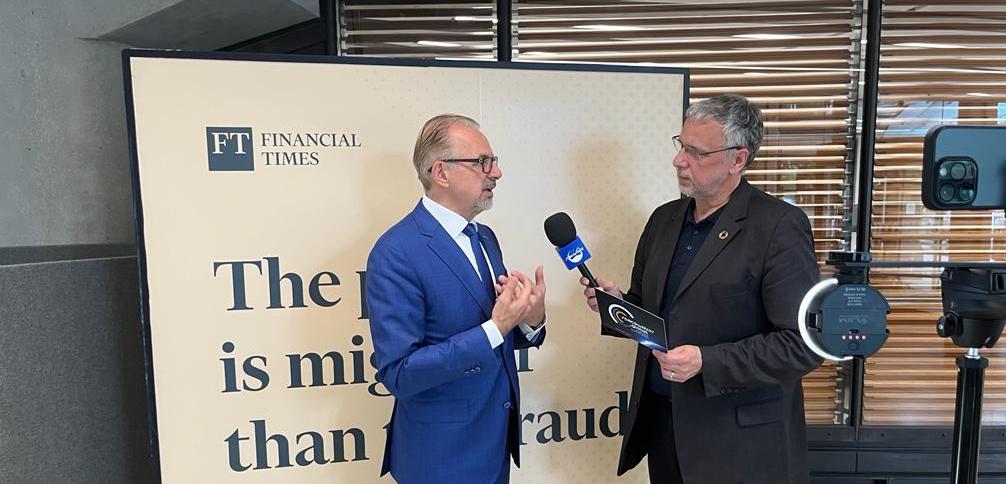
In June 2023 the Financial Times hosted the second edition of their Investing in Space event – smaller and with fewer investors than last year. The in-person day was excellent – well organized, well structured, informative, and inspiring. Bob Smith, CEO of Blue Origin gave his insights about the progress of Blue Origins New Glenn rockets and their ambitions towards the Moon. It was a useful update on their final goals, even if he did not answer Peggy Hollinger’s question about an increase in budget and about the date of New Glenn’s first orbital flight.
Voyager’s CEO Dylan Taylor provided his list of “Ten things that will happen in Space in the next decade” (mainly based on Elon’s predictions though). For more insights on this read Dr. Emma Gatti’s article on Dylan’s predictions. Chad Anderson, founder and managing partner of Space Capital, during his interview gave some insights into the space market, the upcoming consolidation/shakeout in the sector, and the impact of SpaceX’s starship to accelerate growth in existing markets and create entirely new opportunities. He also discussed the increasing interest in the lunar economy, largely driven by governmental initiatives and funding. These points reflect both the significant opportunities and risks present in the rapidly evolving space industry. The next few years are likely to be crucial in determining the future trajectory of commercial space initiatives.
However, predictions are dangerous. If we look back at what people predicted just 10 years ago about where we would be in space today – they were grossly wrong. Space now is an infrastructure (while a decade ago it was a self-centered and exclusive ecosystem, mainly government-driven with few commercial exceptions). Now the commercial market has largely taken over activities in the low-earth-orbits, such as transport, communications, and observations. Just a few predicted this.
TREND: predictions on what will be hot in space in the next decade.
PROBLEM: predictions are often very unpredictable.
Unanswered questions
After so many conferences, so many interventions, and so many meetings, which problems have not been discussed? The Space sector at the moment is strongly focused on security, finding new investments, going to the Moon, and geopolitical issues (US-China, Europe, and Russia, the Brexit problem, etc.). Some questions however keep not being answered, probably because the domain itself has not put them into focus yet. For example: what is space business? It’s launches, rockets, satellites? Of course. But what about a weather app, or my UBER using location-based services? In the first episode of Space Economy Insights, Kevin O’Connell and Dr. Emma Gatti discussed this with Claire Jolly, Head of Innovation Policies for Space and Oceans Unit at the Organization for Economic Cooperation and Development (OECD). Clare includes in the term “space economy” the full range of activities, and the use of resources that create and provide value and benefits to human beings in the course of exploring, understanding, and managing space.
Another question that kept me thinking: Should the climate crisis be a propellant for a commercial case study? My personal view might not represent a commercially sustainable logic, but I think it is ethically questionable to benefit from a crisis like the one we are living in. Every crisis in history surely has led to technical advancements and innovations, and there are always winners after periods of profound distress. Pharmaceutical companies came out pretty well after Covid. But maybe we should tread carefully with business speculating on our fragile planet.
As a European, I keep asking myself what will be Europe’s role in the global space market? Europe has huge ambitions for its space activities. That is great and makes me very proud as a European. The ambitions range from human and robotic exploration, scientific research, Earth observation, and Satellite navigation to space sustainability, regulations, and launches. Ariane 5 just successfully launched a few weeks ago, but we will have to wait for the next one. Let’s hope we will be able to launch another European rocket – soon.
Finally, it’s only fair to conclude with the importance of Space for our culture and our reality. In a recent interview we did with ESA’s Director General Dr. Josef Aschbacher, he emphasized the role of space for everyone: “If you’re not using space in your company, you may actually miss out and you may not be ready for the future”.




